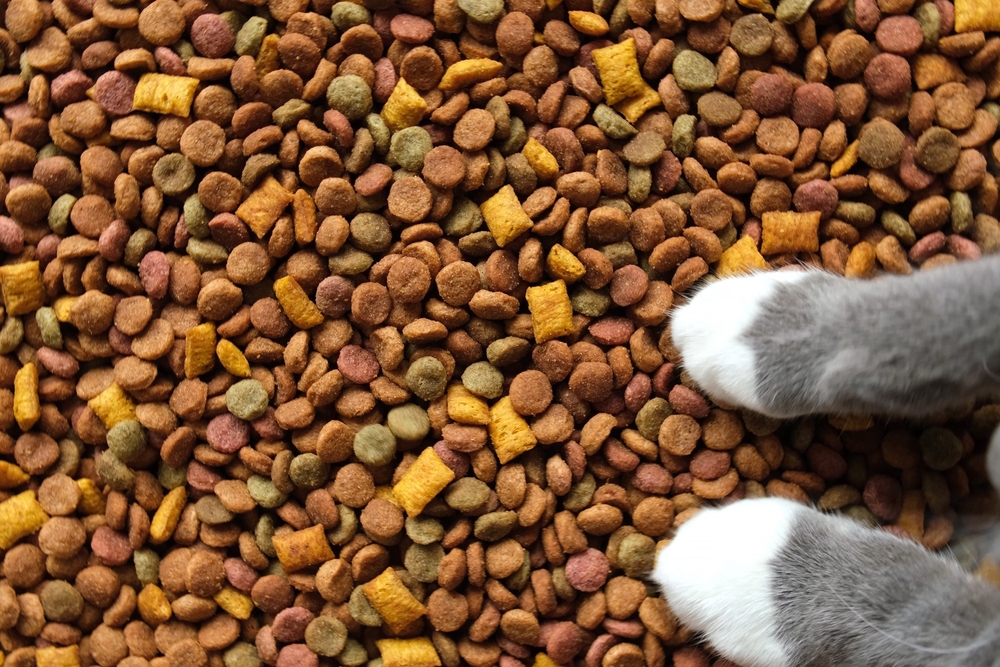Trying to understand pet food labels with their barrage of information and jargon can be overwhelming. However, as a pet owner, you must be able to interpret pet food label information to ensure you provide your four-legged friend with the nutrition they need. Our Lebanon Animal Hospital team breaks down the critical components of pet food labels, to empower you to make informed decisions about your pet’s diet.
How to decipher pet food label information
Pet food labels have several components, some more important to pet owners than others. The following are pinnacle components you should understand to ensure you’re feeding your pet the correct diet:
- Ingredients list — The ingredients list is one of the more important sections of the pet food label and includes all the ingredients that comprise the food. Ingredients are listed in descending order by weight. Look for proteins, such as chicken, turkey, or salmon, as the primary ingredient, along with quality carbohydrates, such as brown rice and whole grains.
- Guaranteed analysis — The guaranteed analysis provides the minimum and maximum percentages of crude protein, fat, fiber, and moisture. Ensure the protein and fat percentages meet your pet’s needs. Cats, for example, require higher protein levels than dogs. Ask our Lebanon Animal Hospital veterinarian for help in evaluating these values based on your pet’s age, size, and activity level.
- Nutritional adequacy statement — This component, also called the AAFCO statement, indicates that the food meets the nutritional levels established for your pet’s specific life stage (e.g., growth, maintenance, or all life stages).
- Feeding guidelines — Feeding instructions are based on weight and life stage. Unfortunately, these instructions do not account for metabolic needs and activity levels, so you should consult our veterinary team to determine the correct daily amount to feed your furry pal.
- Manufacturer information — This section should include the business name, address, and phone number. If you have questions or concerns about your pet’s food, the contact information allows you to contact the company directly.
A word about pet food jargon
Pet food jargon is an issue when you are trying to understand what’s in your pets’ food. Pet food is often described using words that sound great but may not be accurate, and you must ensure you investigate and find the facts. For example, terms such as “grain-free” may not be completely accurate because of possible cross-contamination from other food sources. “Organic” is another example, because pet food regulations have loose guidelines and are inconsistent.
Other terms used to market pet food that should be checked for their exact meaning and accuracy include “all-natural,” “wheat-free,” “wild, “gourmet,” and “whole.” Be an informed consumer, and research pet food claims before choosing your pet’s food.
The pet food watchdog

It’s good for pet owners to know that someone is watching out for their pet when it comes to food. The Association of American Feed Control Officials (AAFCO) is a non-profit organization that sets standards and regulations for animal feed and pet food in the United States. The organization aims to safeguard pet health and safety and ensure that pet food products available on the market are nutritionally adequate.
AAFCO’s critical functions include:
- Developing nutritional standards — AAFCO establishes nutrient profiles and guidelines for pet food formulation based on a pet’s life stage.
- Ingredient definitions — AAFCO defines ingredients used in pet food, ensuring consistency and clarity in labeling.
- Labeling regulations — The organization sets labeling requirements for pet food, including guidelines for ingredient lists, guaranteed analysis, feeding directions, and nutritional adequacy statements, which are all listed on the package label.
- Ingredient safety — AAFCO evaluates the safety of feed ingredients and establishes guidelines for their use in pet food.
- Regulatory agencies — AAFCO collaborates with regulatory agencies, such as the Food and Drug Administration (FDA) and state departments of agriculture, to promote the safety and quality of animal feed and pet food.
When you understand the information on your pet’s food label, you can choose the best diet for your four-legged friend. If you have questions about your pet’s food, call our Lebanon Animal Hospital team. We are your resource for all things related to your pet’s health and well-being, and we will help you customize your pet’s diet.








Leave A Comment